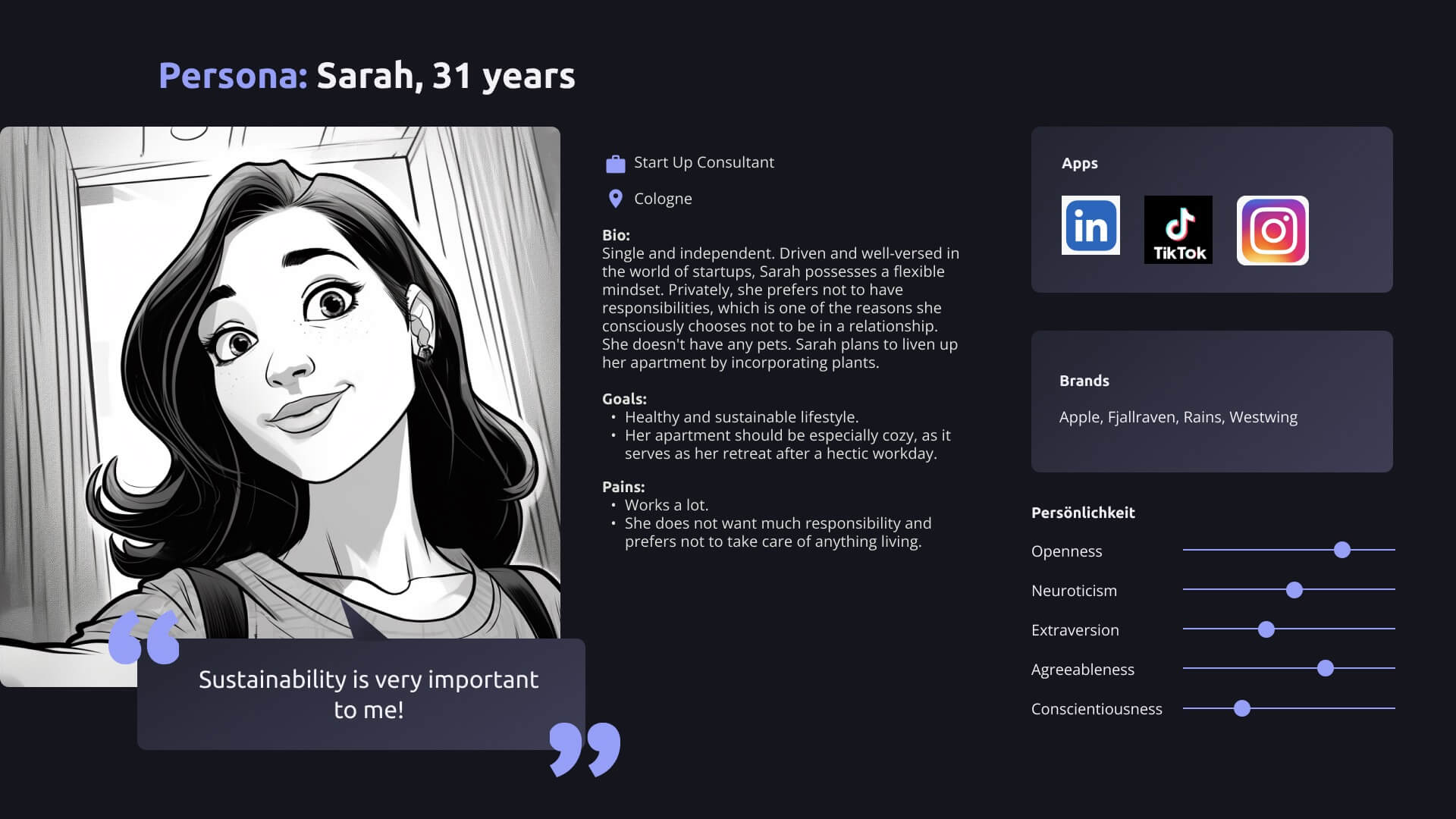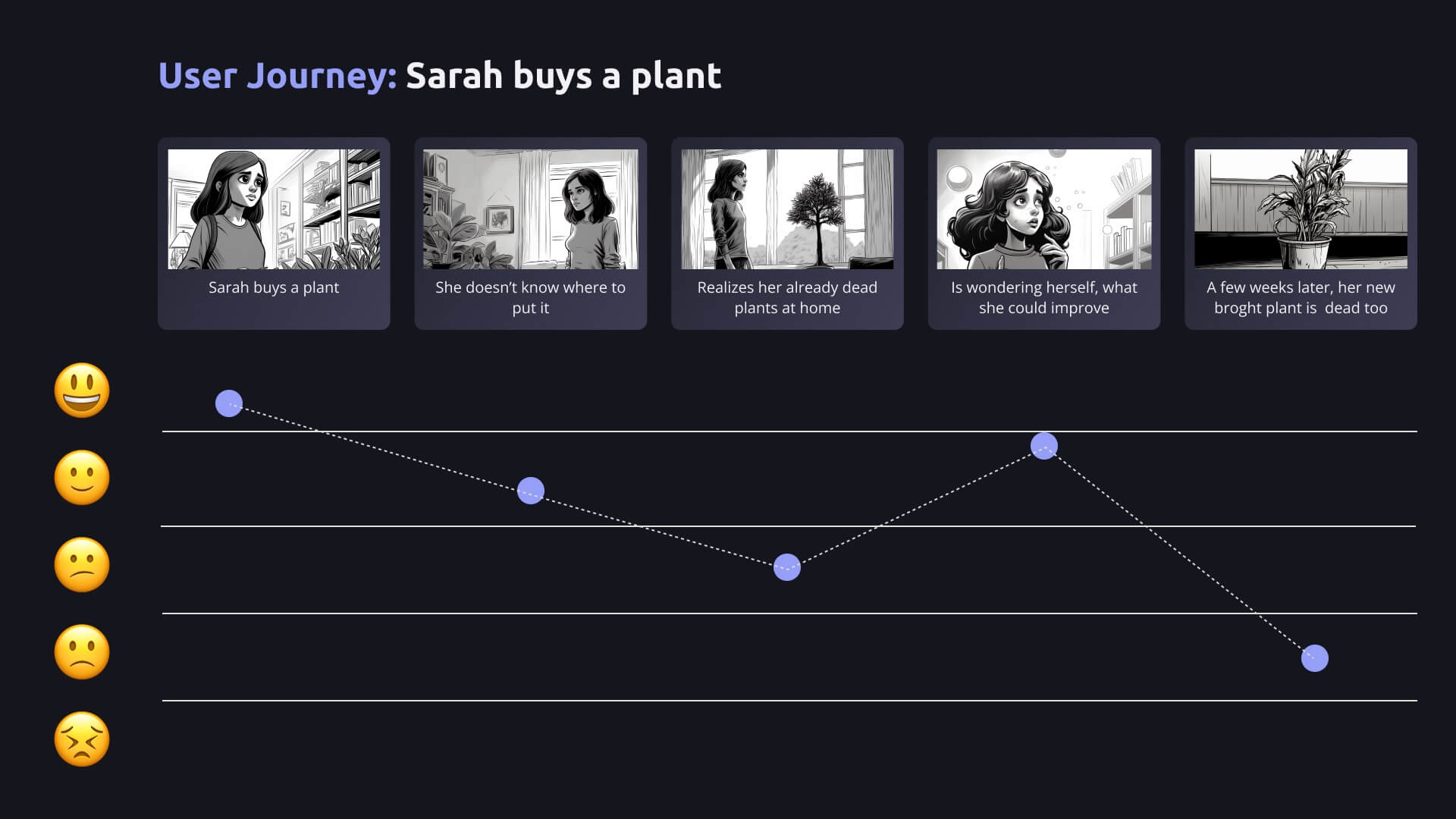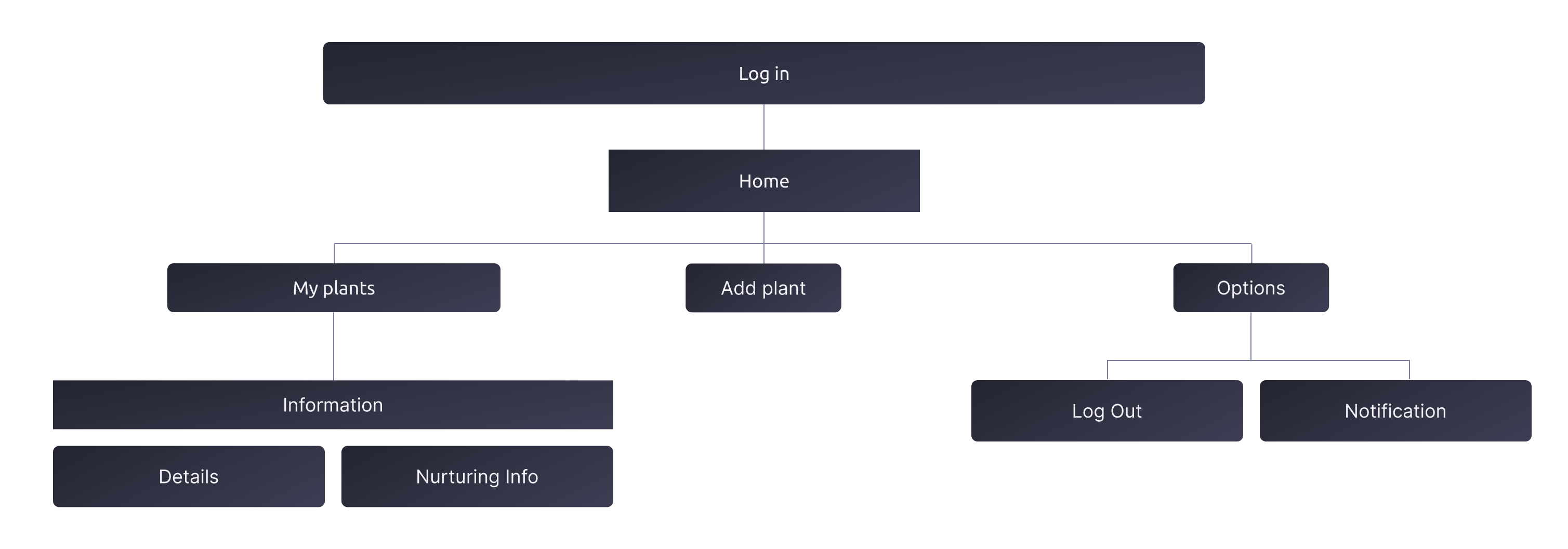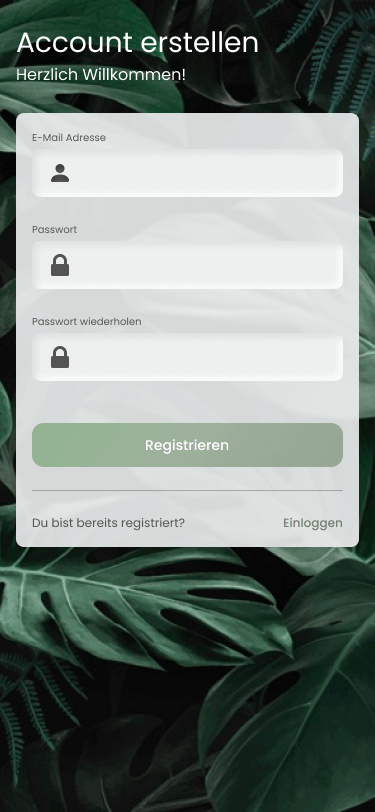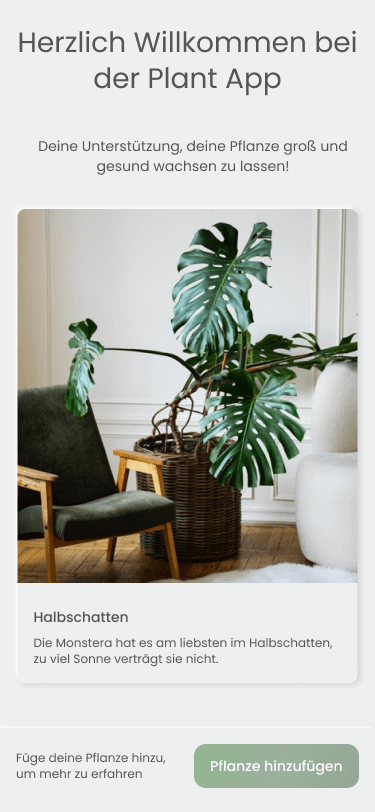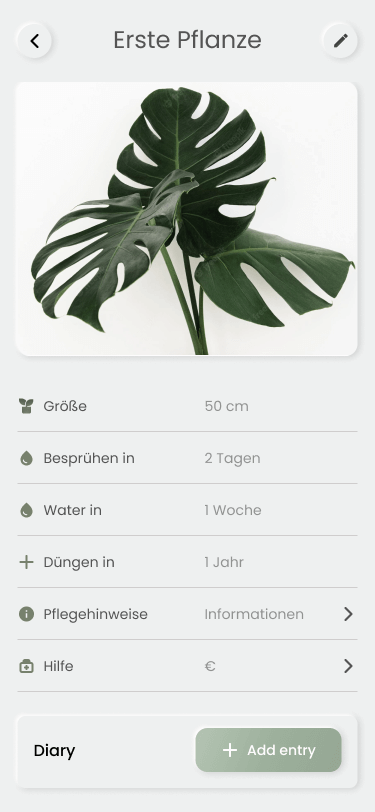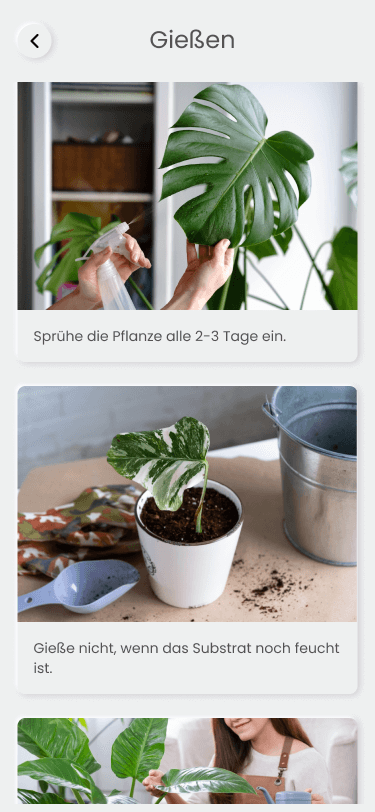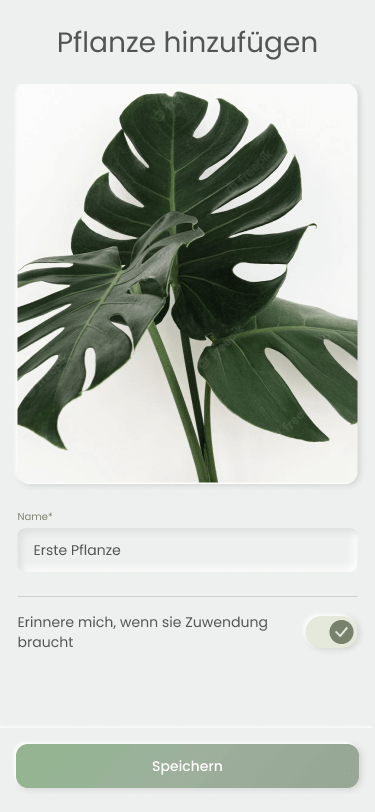How can I help ensure that indoor plants have a longer life cycle?
Showcase
Problem statement
Last time I visited my friend, I brought along a vibrant plant, hoping to share some green joy. As they welcomed it with smiles, I sensed a flicker of doubt – a hope that this one would defy the fate of the three wilted plants on their shelf. Having heard this story too many times, I felt compelled to solve the problem. This is how I embarked on my UX journey for this showcase.
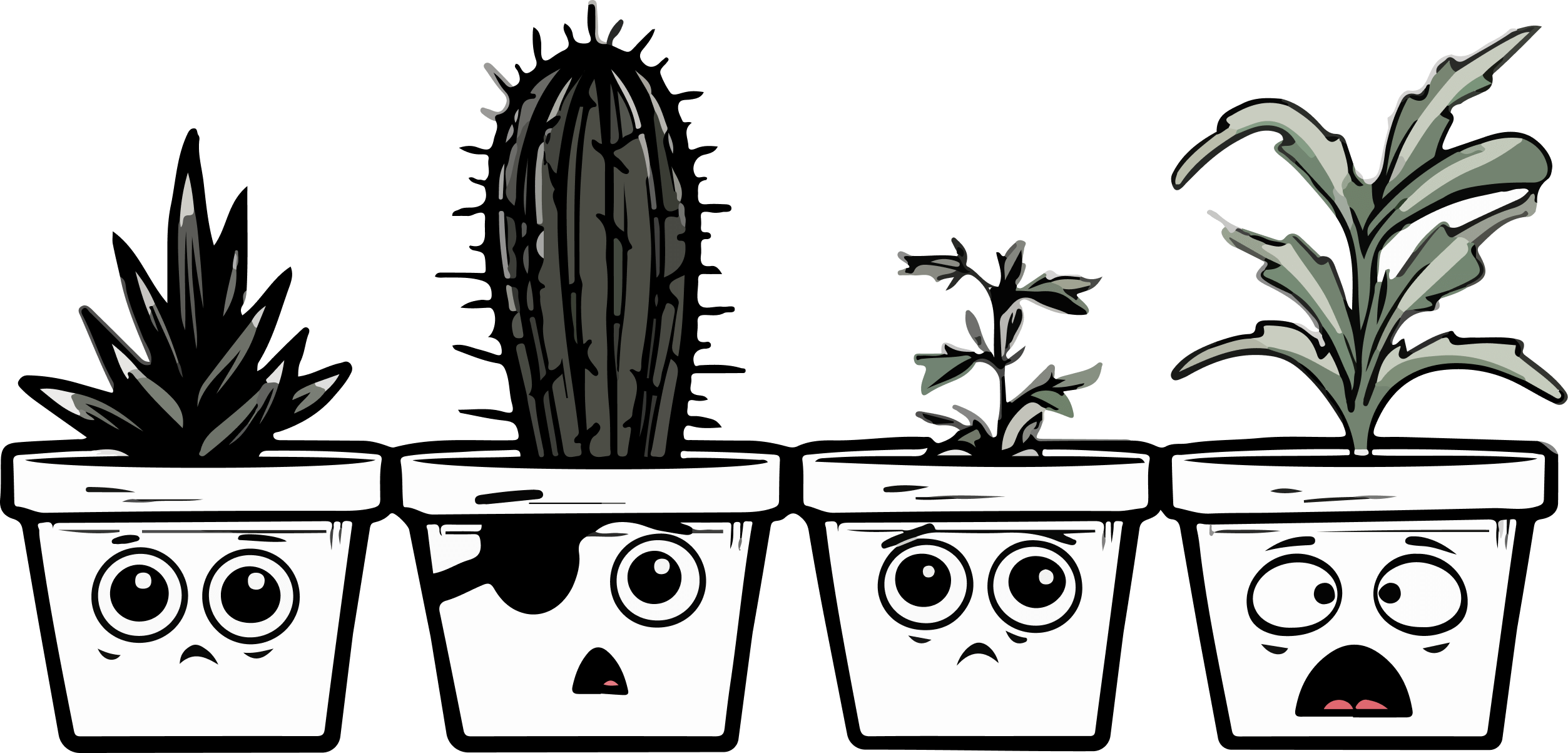
This is a showcase that aims to embody a portion of my approach as a UX designer. Since I don’t plan to implement the app, I chose not to conduct interviews, as I highly value the time of others and strive to handle it conscientiously. Instead, the Persona and Journey were crafted based on a broad research foundation, drawing insights from interviews and studies. Your time as a reader is also valued, so enjoy exploring.
Perhaps, I can spark a bit of enthusiasm for the world of UX in you. For the creation process, I adhered to key stages of the Double Diamond Model: Empathy, Define, and Ideate. The next steps would involve thoroughly testing my proposed solutions and entering an iterative process to refine and enhance them.
Empathy
Magazine articles and studies
Analysis
Synthesis of empathy phase findings
Ideate
Keen pursuit of possible solutions
In the world of plant care, where the allure of indoor greens meets daily challenges, my journey starts with empathy. Exploring the experiences of plant enthusiasts reveals insights waiting to be woven into a meaningful understanding of real struggles and aspirations.
Imagine the pain points: a world where caring for indoor plants is hindered by a lack of knowledge about their specific needs.
The challenges deepen as we explore timing care correctly and navigating the bustling rhythm of everyday life, where even small tasks like watering flowers are easily forgotten.
In light of these challenges, I consolidate these insights to craft a Persona and User Journey, laying the foundation for solutions that align with the needs of both the plants and the users.
Following the Journey and Persona exercises, numerous use cases crystallize in my mind, encapsulating the solutions needed to address the issues identified in the journey.
For these tasks, I’ve already identified subtasks, realizing that an app serves as the ideal medium for the solution. Regardless, I prioritize the use cases, creating a preliminary User Story Map that assists in refining my solution.
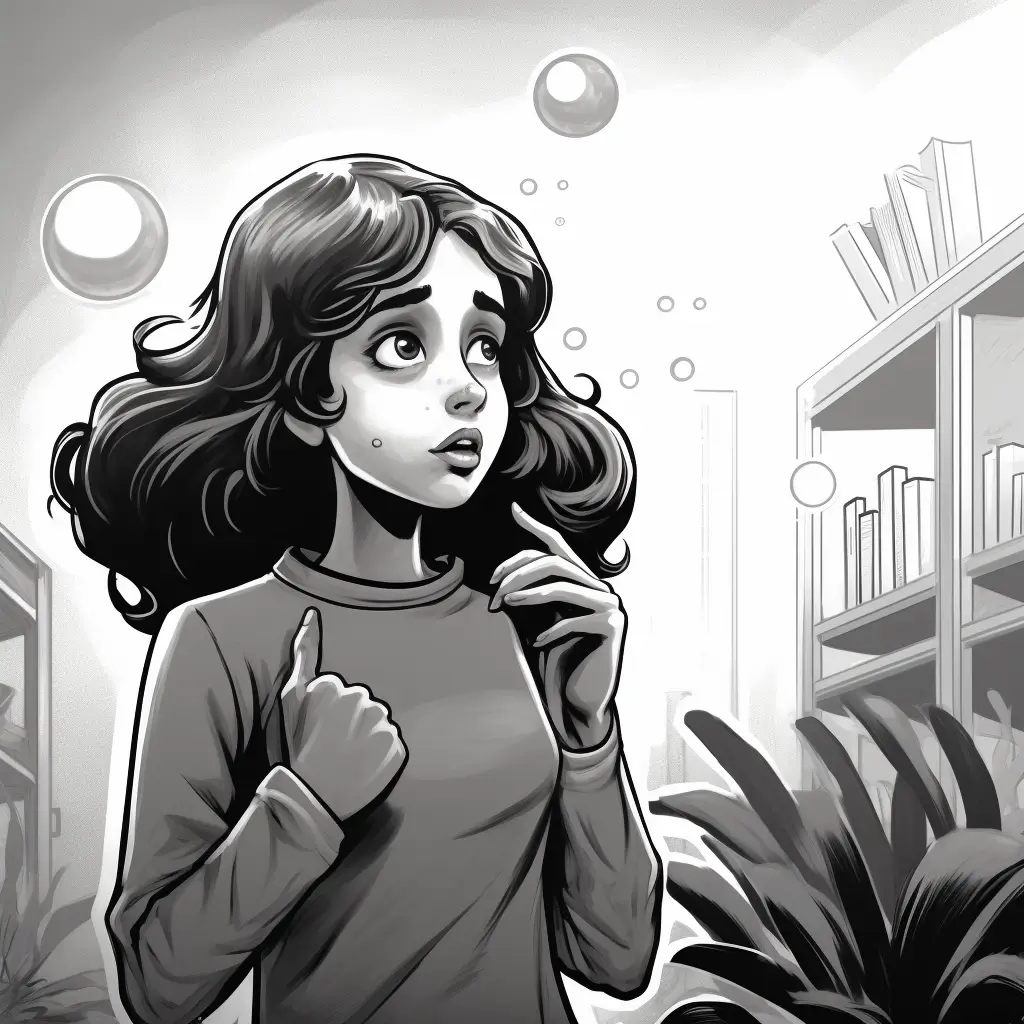
"I want to learn how to best take care of this one plant so that it doesn't die on me again."
- It is important to understand the watering needs of my plant.
- I need to know the suitable location for my plant.
- I need to know how often and when it needs to be fertilized.
- I need to know the appropriate pot size and how often it needs to be repotted.
"I want to take care of multiple plants to make my apartment even more beautiful!"
- I want to access information about all of my plants.
- I want to be reminded for each of them about what needs to be done.
"I want to be reminded to take care of the plant."
- Remind me to water it.
- Tell me how much water it needs.
- Remind me to fertilize it.
- Remind me to repot it.
"I want to make it grow as quickly as possible since I'd like a plant similar in size to my colleague's."
After identifying the primary requirements, I initiated the process of translating them into a purposeful user interface. I commenced by meticulously crafting an information architecture and generating low-fidelity wireframes.
Satisfied with the outcomes, I seamlessly transitioned to developing high-fidelity representations. Considering the product’s essence as a lifestyle-oriented offering, I strategically prioritized the adoption of a visual language that authentically captures the three-dimensional essence of plants.

